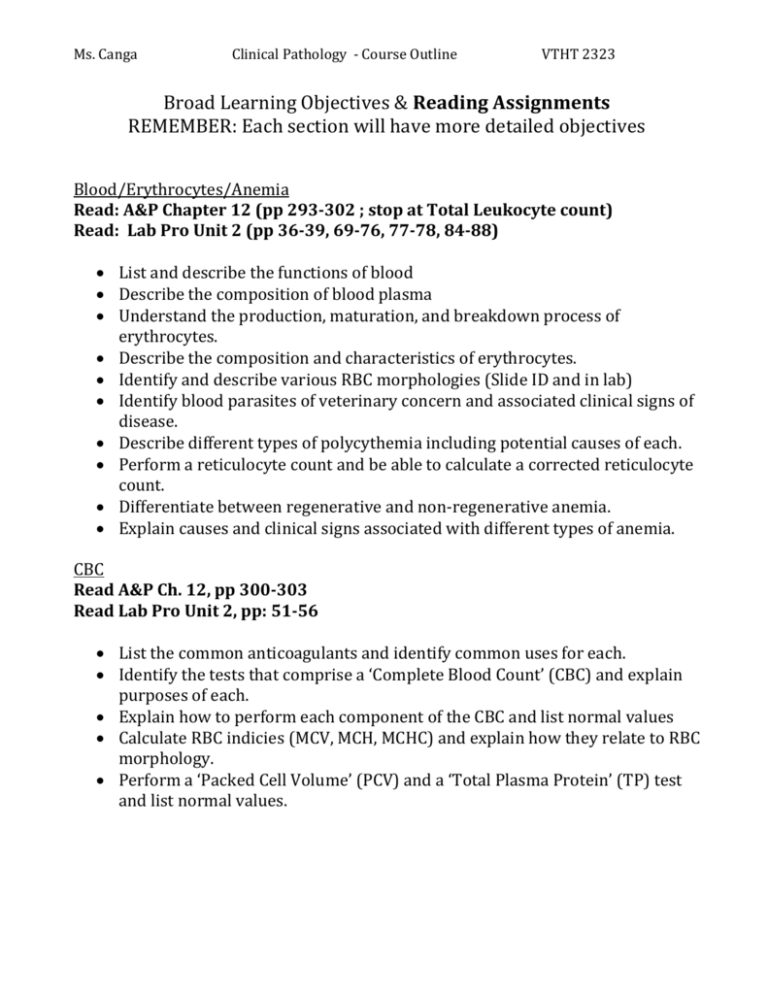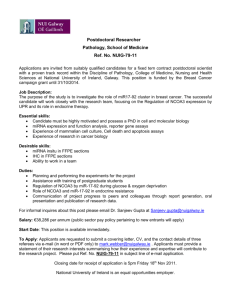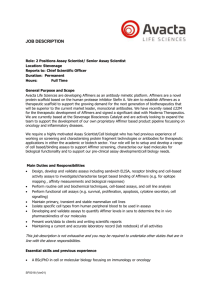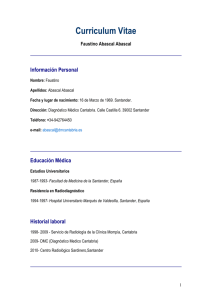Clin Path Broad Learning Objectives
advertisement

Ms. Canga Clinical Pathology - Course Outline VTHT 2323 Broad Learning Objectives & Reading Assignments REMEMBER: Each section will have more detailed objectives Blood/Erythrocytes/Anemia Read: A&P Chapter 12 (pp 293-302 ; stop at Total Leukocyte count) Read: Lab Pro Unit 2 (pp 36-39, 69-76, 77-78, 84-88) List and describe the functions of blood Describe the composition of blood plasma Understand the production, maturation, and breakdown process of erythrocytes. Describe the composition and characteristics of erythrocytes. Identify and describe various RBC morphologies (Slide ID and in lab) Identify blood parasites of veterinary concern and associated clinical signs of disease. Describe different types of polycythemia including potential causes of each. Perform a reticulocyte count and be able to calculate a corrected reticulocyte count. Differentiate between regenerative and non-regenerative anemia. Explain causes and clinical signs associated with different types of anemia. CBC Read A&P Ch. 12, pp 300-303 Read Lab Pro Unit 2, pp: 51-56 List the common anticoagulants and identify common uses for each. Identify the tests that comprise a ‘Complete Blood Count’ (CBC) and explain purposes of each. Explain how to perform each component of the CBC and list normal values Calculate RBC indicies (MCV, MCH, MCHC) and explain how they relate to RBC morphology. Perform a ‘Packed Cell Volume’ (PCV) and a ‘Total Plasma Protein’ (TP) test and list normal values. Ms. Canga Clinical Pathology - Course Outline VTHT 2323 Leukocytes/Immunology Read: A&P Chapter 12 (pp 306 - 337 ) Read Lab Pro (pp 57-69, stop at RBC abnormalities) Handouts List the types of leukocytes and describe the formation, morphology, and functions of each. Perform a differential WBC count and determine the absolute and relative values of WBCs. Describe the function of the lymphatic system. List and describe the functions of the immune system. Differentiate between specific and non-specific immunity. Explain passive vs. active and acquired vs. natural immunity. List and describe the classes of immunoglobulins. Describe common serologic and molecular diagnostic tests utilized in veterinary medicine. Coagulation and Platelets Read: A&P Chapter 9 (pg. 304 - 306) Handouts Describe the function and basic formation of platelets. Explain common disorders associated with platelets. Be familiar with the coagulation cascade. List and describe the commonly performed tests for blood coagulation. Perform an estimated platelet count. Discuss and classify common coagulopathies and associated clinical signs. Ms. Canga Clinical Pathology - Course Outline VTHT 2323 Clinical Chemistry Read: Lab Pro pp: 196-231 Handouts Describe sample collection and handling for clinical chemistry assays. List and describe the commonly performed assays for serum protein. List and describe the commonly performed assays for hepatobiliary evaluation. List and describe the commonly performed assays for kidney and pancreatic function. List and describe commonly performed assays for endocrine function and electrolyte assays. Interpret blood chemistry reports relative to organ function. Discuss normal vs. abnormal blood chemistry values. Demonstrate the ability to operate Idexx Vet Test and LaserCyte machines. Urinalysis Read Lab Pro Unit 5, pp: 149-182 Handouts Discuss and describe different methods of sample collection, including pros and cons of each. Discuss terminology associated with urine production and testing. List and describe the normal and common abnormal physical properties of urine. Define specific gravity and describe procedures for determining specific gravity. List the commonly performed chemical assays of urine. Identify different epithelial cells, blood cells, crystals, casts, etc… found in urine. Describe how casts are formed and list the types of casts that may be present. List and describe crystals that may be seen in acidic and alkaline urine. Perform urinalysis, including gross exam, chemical exam, and microscopic exam of sediment. Ms. Canga Clinical Pathology - Course Outline VTHT 2323 Cytology Read Lab Pro Unit 9, pp: 362-400 Describe the purpose of cytology evaluations. Describe sample collection procedures for cytological examination of various tissues and fluids. List and describe methods for preparing and staining cytology samples. Describe methods for categorizing inflammation vs. neoplasia when examining a sample. Understand malignancy criteria associated with differentiating between benign and malignant neoplasia. Discuss proper labeling and packaging of cytology samples Discuss semen collection procedures and identify sperm abnormalities. Collect, prepare, and evaluate a vaginal cytology. Collect, prepare, and evaluate an ear cytology. Microbiology Read: Lab Pro Unit 7, pp: 236-273 Handouts Understand concepts related to bacteriology, virology, and mycology. Describe methods for collection and handling of samples for microbiology testing. Describe the procedure for inoculation of agar plates and other media. Explain proper incubation methods for bacterial cultures. List types of culture media commonly used for testing and explain the specific use of each. List and describe bacterial colony morphologic characteristics. Perform a Gram stain procedure and interpret results. Describe procedures for performing blood and urine cultures. List and identify common bacterial species encountered in small animal practice. Describe the procedure for performing antimicrobial susceptibility testing. Ms. Canga Clinical Pathology - Course Outline VTHT 2323 List the common fungal organisms encountered in veterinary practice and describe the procedures for sample collection and identification of these organisms. Collect samples, inoculate agar plates, culture, stain, and identify bacteria in the lab.






